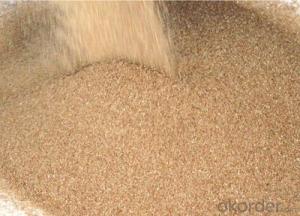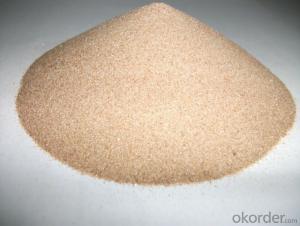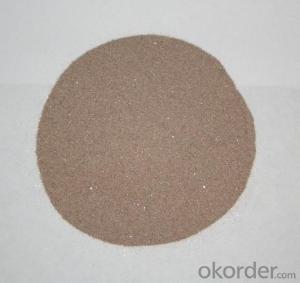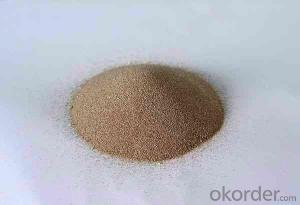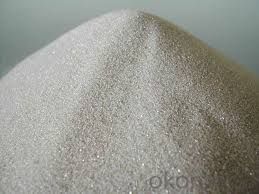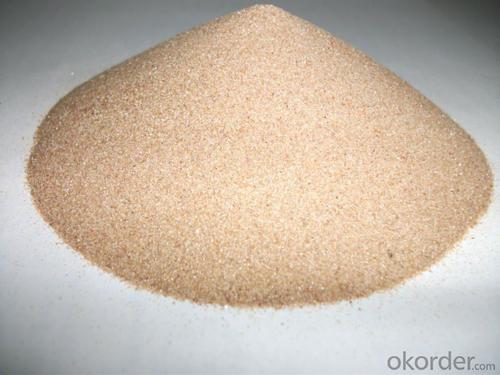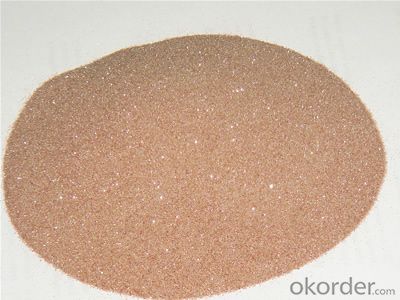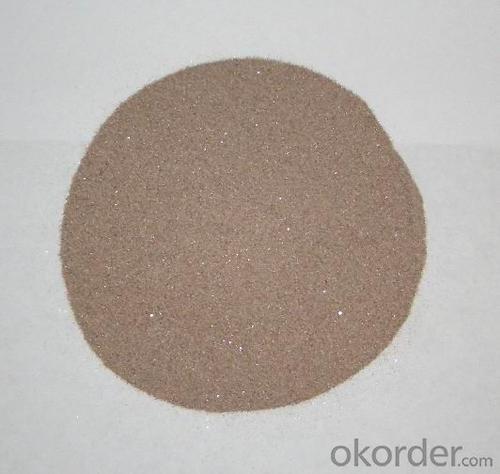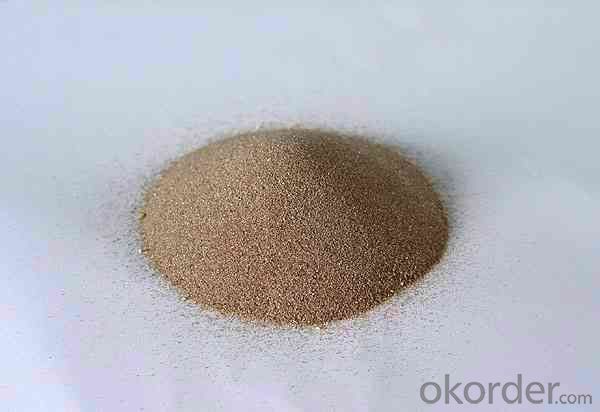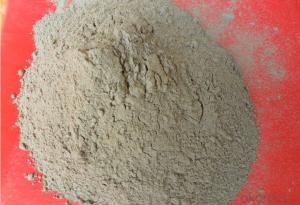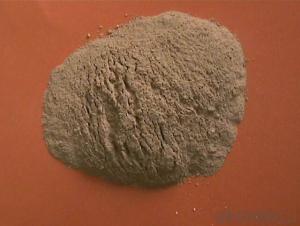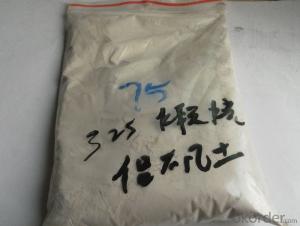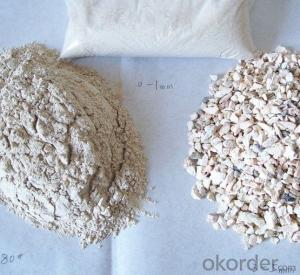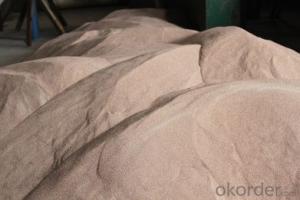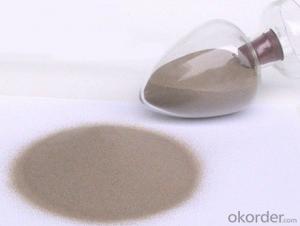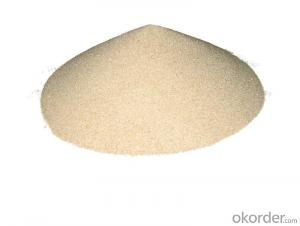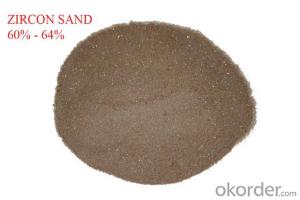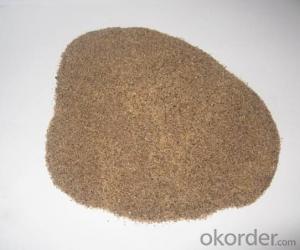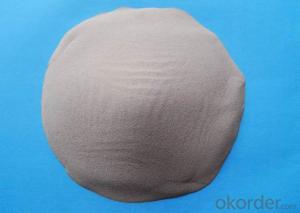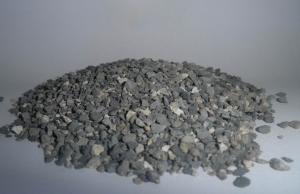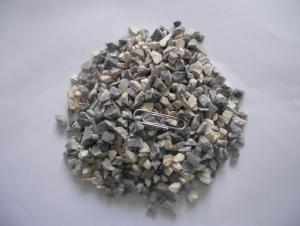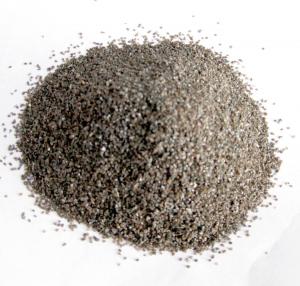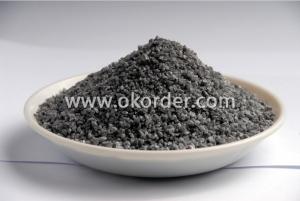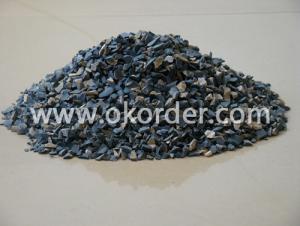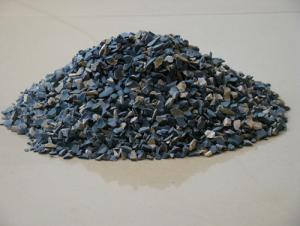Raw Materials for Refractory:High-Quality Zircon Sands and Zircon Flour
- Loading Port:
- Tianjin
- Payment Terms:
- TT OR LC
- Min Order Qty:
- 25 m.t.
- Supply Capability:
- 3000 m.t./month
OKorder Service Pledge
OKorder Financial Service
You Might Also Like
Refractory Material/ Zircon Sands and Zircon Flour Good Quality
1.Structure of Zircon Sand and Zircon Powder
We are offer zircon sand With Below Mention Descriptions: ZrO2 65 - 67 %. We are offer zircon sand With Below Mention Descriptions: ZrO2 65 - 67 %. Zircon is a remarkable mineral, if only for its almost ubiquitous presence in the crust of Earth. It occurs in igneous rocks as primary crystallization products, in metamorphic rocks and in sedimentary rocks as detrital grains.
Further, the mineral due to hardness, durability and chemical inertness, zircon persists in sedimentary deposits and is a common constituent of most sands.
2.Main Features of Zircon Sand and Zircon Powder
1 Tiny, round, solid ball shape provides greater surface area for improved performance and dispersion in its application
2 High refractory rating, lower specific gravity rating, and higher service temperature produces greater yield
3 With lower bulk density, it offers better air permeability for better performance as a result of its overall physical characteristics
3.Main usage of Zircon Sand and Zircon Powder
Ceramic Industries – Wall Tiles , Floor Tiles , Roofing Tiles
Sanitary Ware Industries
Pottery Industries
Porcelain Glazes
Frit for Glaze and Enamels
Ceramic Colour Industries
Admixture for Glass , Opal Glass
Picture Tube Industries
Foundries , Investment Casting Industries
Special Refractories , Castable Refractories
Zircon Bricks , Zirconium Oxide Industries
Epoxy Resin , Special Paints Industries
4. Zircon Sand and Zircon Powder Images
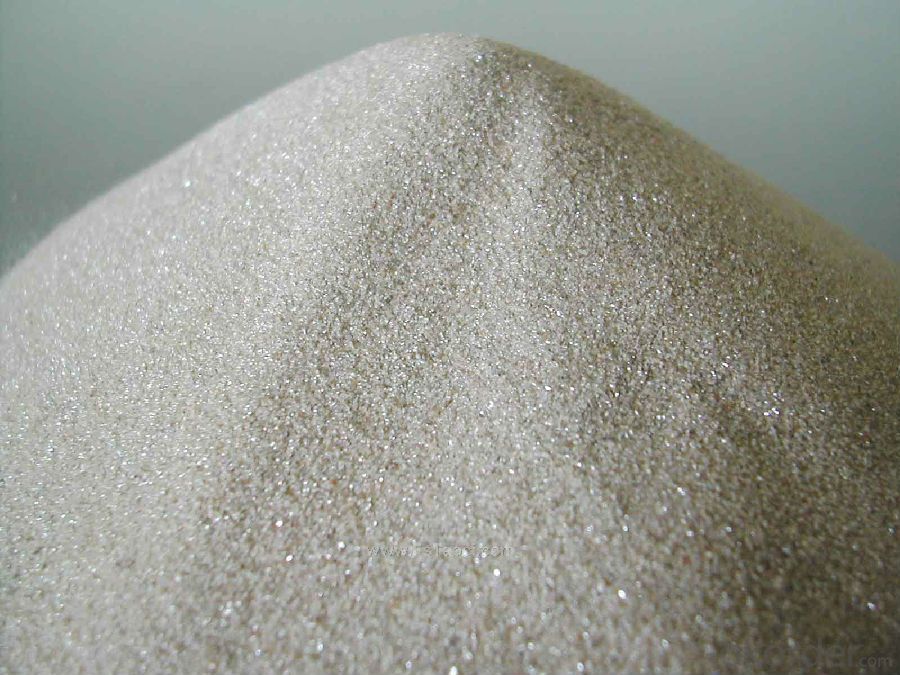
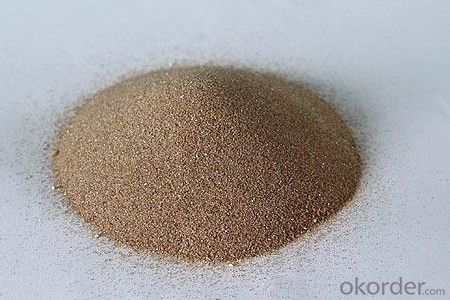
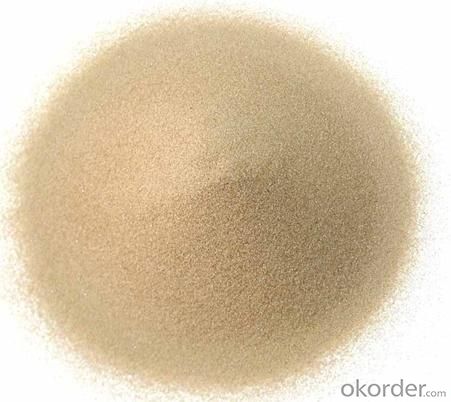
5. Zircon Sand and Zircon Powder Specification
Item | SY8 | SY6 |
Zr Content (ZrO2) | ≥66% | ≥65.5% |
Fe Content (Fe2O3) | ≤0.08% | ≤0.12% |
Ti Content (TiO2) | ≤0.10% | ≤0.10% |
6.FAQ of Zircon Sand and Zircon Powder
1). Q: Are you a factory or trading company?
A: We are a factory.
2). Q: Where is your factory located? How can I visit there?
A: Our factory is located in China. You are warmly welcomed to visit us!
3). Q: How can I get some samples?
A: Please contact me for samples
- Q: who knows the fire resistant levels of fireproofing glass?
- Fireproofing glass is a kind of special glass which can keep its integrity and thermal insulation performance in regular insulating refractory trials. and it can be divided into three classes according to its fire resistance: Class A, it's a kind of fireproofing glass that can satisfy the requirements of refractory integrity, refractory and thermal insulation at the same time. This kind of glass has the properiyies of transmittance, fireproofing ( smoke insulation, fireproofing, and keeping out thermal radiation), sound insulation, shock resistance, and it's suitable for steel and wooden fire door of building decoration, windows, varnishing, partition walldaylighting?roof,ceiling?screen,perspective floor and other construction components demading for transparency and fireproofing. Class B, it's a kind of fireproofing glass that can satisfy the requirements of refractory integrity, refractory and thermal insulation at the same time. Such kind of fireproofing glasses mostly are composite fireproofing glasses and has characteristics of transmittance,fireproofing and smoke insulation. Class C, it's a kind of fireproofing glass that only satisfies the requirements of refractory integrity. This kind of glass has characteristics of transmittance, fireproofing, smoke insulation and high strength,etc. It's suitable for fireproofing glass partition wall, fire Windows, outside curtain wall and other places without insulation requirements. Classify from the structure,fireproofing glass can be divided into composite fireproofing glass and monolithic fireproofing glass.
- Q: Does anyone know the difference between refractory and thermal insulation material?
- The main difference between insulation bricks and refractory bricks are as follows: 1. Insulation effect The heat conductivity cofficient of insulation bricks is usually 0.2-0.4 (average temperature of 350 ± 25 ℃) w / mk while the heat conductivity coefficient of refractory bricks is 1.0 (average temperature of 350 ± 25 ℃) w / mk or more. Thus it can be seen that the insulation effect of insulation bricks is much better than that of refractory bricks. 2. Refractoriness The refractoriness of insulation bricks is generally below 1,400 degrees centigrade while the refractoriness of refractory bricks is above 1,400 degrees centigrade. 3. Density Insulation bricks are generally light-weight insulation material, and the density is generally 0.8-1.0g / cm3. But the density of refractory bricks is above 2.0g / cm3.
- Q: Fire rating of decoration materials
- You can refer to (code for fire protection design of buildings)
- Q: What are the models of bauxite with high alumina?
- China Ferrous Metal Industry Corporation released the industry standard of bauxite (YS / T78-94) in 1994. According to this standard, bauxite can be divided to sedimentary diaspore, stacked type diaspore and lateritic gibbsite. According to the chemical composition, it can be divided into nine trade marks as LK12-70, LK8-65, LK5- 60, LK3-53, LK15-60, LK11-55, LK8-50, LK7-50 and LK3-40. In addition to the provisions of chemical composition of bauxite, the standard also requires that the water of sedimentary diaspore shall not exceed 7% and water of stacked type diaspore and lateritic gibbsite shall not exceed 8%. Moreover, particle size of bauxite should be not greater than 150mm. Bauxite shall not be mixed with clay, limestone and other debris.
- Q: What antioxidant will be used in refractories?
- Antioxidants (Antioxidants) is the material to prevent bad influence of oxygen. It is a kind of material that can help to capture and neutralize free radicals, the category of material to remove free radicals damage to human body. Some of the body's antioxidant is self-synthesis, others is also from the food supply. Strong antioxidant such as ASTA (short for astaxanthin), etc., generally human cannot synthesize and it must be intaked from food. (1)antioxidants in the food can protect food from oxidative damage and deterioration. (2) it has the antioxidant effect in the human body's digestive tract and prevent oxidative damage in the digestive tract. (3) after being absorped, it can play a role in other body tissues and organs. (4)It is derived from certain foods that have antioxidant effect of extract and can be used as a treatment drug. Antioxidant mechanism includs chelated metal ion, scavenging free radicals, quenching singlet oxygen and removal of oxygen and inhibit oxidase activity, etc
- Q: who knows the fire resistant level of fireproof gypsum board ?
- combustion performance of building decoration materials should be divided into four levels: A level, non-flammable; Class B1, flame retardant; B2 level, flammability; B3 level, flammable. Choose the materials above B1level. Thank you
- Q: Is aluminium oxide refractory material?
- Aluminium oxide with 2030?C melting?point is a kind of good refractory material. It can be used as analytical reagent, dehydration and adsorbing?material of organic solvent, catalyst of organic reaction, abraser,polishing agent, raw material of aluminum smelting technology and refractory material. Hope it is helpful to you.
- Q: What types does soft fire prevention materials have?
- Species: Finishing fire retardant paint, component fire retardant coating, fire-resistant coating for steel structure and othe kinds of fire retardant coating. Flame retardant plastics and its products, textiles, building materials, flame retardant fabric and exterior wall thermal insulation system products, floor materials, such as various types of fire prevention materials;Fire prevention board, fire doors, fire resistant window frame.
- Q: What refractories can withstand high temperature above 2100 degrees?
- You can refer to advices from the first one coupled with the second one.
- Q: Fire insulation and fireproof insulation board materials What is the difference in performance?
- What is the difference between fireproof insulation board and fireproof materials in their performance? Fireproof Materials prevents burning through insulating while others by chemical reactions. The overall heat conductivity coefficient of Insulation materials are generally lowered by thermal conductivity of the material itself and the structure of the material. Inorganic active insulation material uses ordinary cement, insulation stone, calcium powder, platycodon grandiflorum as the main raw material, produced after numerous tests with advanced production technology and chemical technology. Products features fire retardant,anti-aging properties and stable performance, low deformation coefficient, environmentaly friendly, compatible with the wall base layer and plastering layer. It has good security and stability and is as durable as ordinary buildings. Strong fire resistance: Fire insulation board is made of inorganic materials (cement), fireproofing level reaching to A1. As it does not burn, it is fireproof.
Send your message to us
Raw Materials for Refractory:High-Quality Zircon Sands and Zircon Flour
- Loading Port:
- Tianjin
- Payment Terms:
- TT OR LC
- Min Order Qty:
- 25 m.t.
- Supply Capability:
- 3000 m.t./month
OKorder Service Pledge
OKorder Financial Service
Similar products
Hot products
Hot Searches
Related keywords
